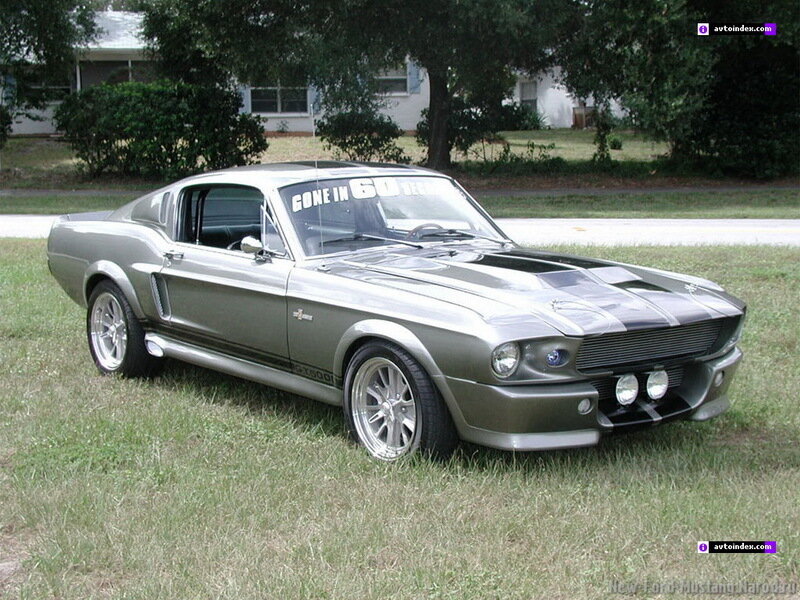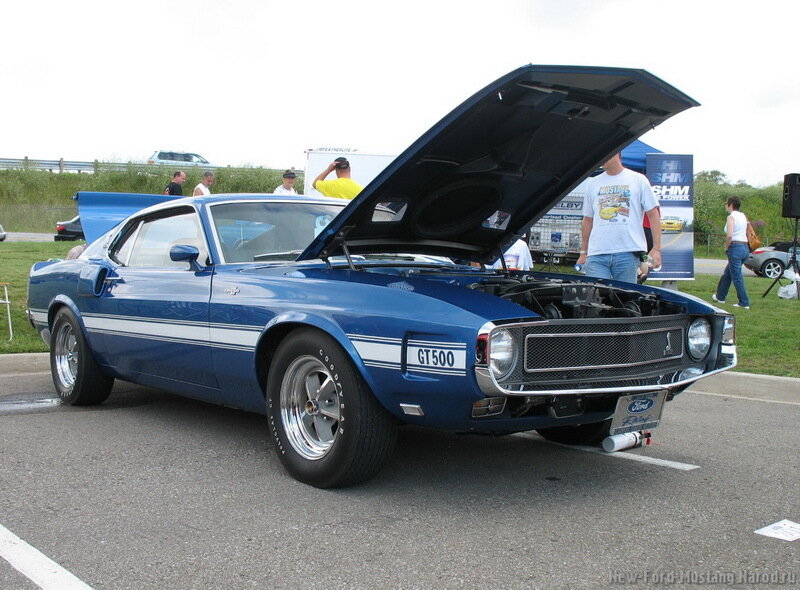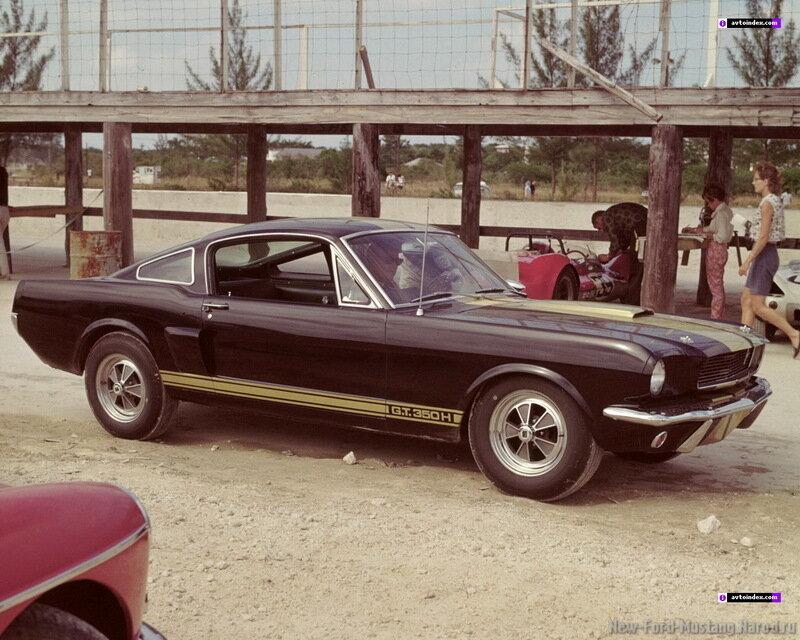 | 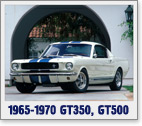 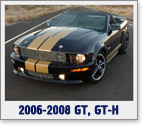  |
1965-1970 GT350, GT500
| История создания | Фотографии и обои |
1969-1970These cars are properly not called "Cobras", which was the Ford-powered AC-based two-seat sports car also produced by Carroll Shelby during the same period. The confusion arises from the optional "Cobra" valve covers on many GT350s, part of a marketing tie-in by Shelby. All 1965-66 cars featured the "K" code 271 hp 289, modified to produce 306 hp. 1965-66 GT350s were delivered by Ford as "bodies in white" for modification by Carroll Shelby's operation, originally in Venice Beach and later at Los Angeles International Airport.All 1965 GT350s were painted Wimbledon White with Guardsman Blue rocker stripes. Contrary to popular belief, very few GT350s were delivered with the optional "Le Mans" hood, roof, and trunk stripes, an option which was usually installed by the dealer. Today it's difficult to find a GT350 not so equipped. 1965 cars had the battery relocated to the trunk, featured underrider traction bars, relocated A-arms, and other modifications. 1966 saw the introduction of non-white colors — including blue, red, green and black. Other changes include special quarter-panel windows replacing the factory extractor vents, non-functional brake scoops on each side and optional automatic transmissions, as well as the addition of an optional Paxton supercharger. The battery was no longer relocated to the trunk for 1966, and the under-rider traction bars were discontinued. A fold-down rear seat was now standard. Where early 1965 cars had black engine blocks, 1966 and later cars had the 289 engine painted blue. The first 252 GT-350s for 1966 began as 1965 Mustang K-Code Fastbacks. Often these first 252 1966 GT-350s are referred to as "carry-over" cars, but this is not the case. These 252 1965 Model Mustangs were specifically ordered by Shelby American for conversion into 1966 GT-350 Mustangs. They were not "left over" from the 1965 production, at all. They had the 1965 Ford Mustang Bodies and 1965 Ford Mustang serial numbers under their Shelby serial numbers. They mostly had 1965 features including standard Koni shock absorbers and engines painted black. Blue engines did not appear in 1966 until after these first 252 GT-350s were produced. 1966 production was 1373 fastbacks, including two prototypes and four drag cars, and 252 early production models with Ford Mustang 1965 bodies. 1001 Hertz fastbacks were produced, including two prototypes. Four convertibles were also produced, for a total of 2378 units for 1966. Shelby struck a deal with the Hertz Corporation to produce a special line of GT350s for rent which were subsequently sold to the public after their rental-car lives were finished. These "GT350H" cars are sought-after today, with some examples selling for more than $200,000. Shelby produced 1000 of these cars: 800 in Raven Black, and 50 each in Candy Apple Red, Wimbledon White, Sapphire Blue and Ivy Green. All Hertz cars featured gold LeMans stripes and rocker panel stripes. Early Hertz cars were available with four-speed manual transmissions until so many cars were returned from rental with burned and broken clutch assemblies that all of the later cars shipped to Hertz were equipped with an automatic transmission. There are stories, possibly apocryphal, that many were rented to use as production class cars at SCCA events, returned with different engines, holes where roll bars had been welded in, etc., etc. 1965-66 GT350s were successful racers, and had many production-class victories. Production numbers: GT350 — 2,380 units (four were special order convertibles for Carroll Shelby, the rumor is that six were made, but only four VINs have been discovered). 1967-1968For 1967, the GT 350 carried over the "K" code high performance 289 with a COBRA aluminum hi-rise and 715 cfm Holley carb. The GT 500 was added to the lineup, equipped with the 428 Police Interceptor. These later cars carried over few of the performance modifications of the 1965-66 GT350s, although they did feature more cosmetic changes. A highly modified 1967 Shelby GT500 was featured in the remake of "Gone in 60 Seconds", replacing the 1973 Mustang Mach 1 in the original. In September 1967, production was moved to the A.O. Smith Company of Ionia, Michigan, under Ford control. Shelby had very little involvement after this time. As Shelby's two-seat Cobra sports car production ended in 1967, the Cobra name was applied to Shelby Mustangs for the first time in 1968. In February 1968, the GT500KR "King of the Road" debuted; under the hood was a 428 cubic-inch Cobra Jet V8 which was conservatively rated at 335 horsepower (250 kW). Due to a production strike, some early 1968 GT500's had a 390 cubic-inch V8.1967-1968Carroll Shelby terminated his agreement with Ford in the summer of 1969. The GT350 and GT500 for the 1969–70 model years received extensive face lifts, the body alone increasing in length by 4 inches (100 mm). Ford was heavily involved with design and style decisions, with Shelby having very little input. The GT350 was now equipped with a 351 cubic-inch V8. Production of Shelby Mustangs ceased with the 1970 model year. The 1970 models were in fact left over 1969 models. |









